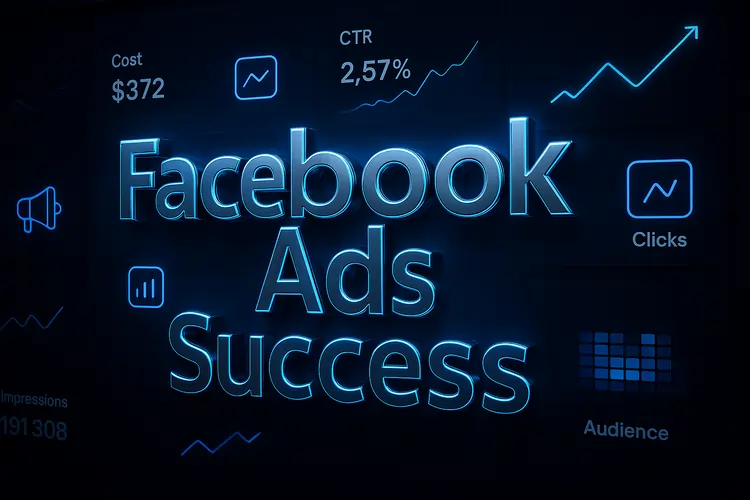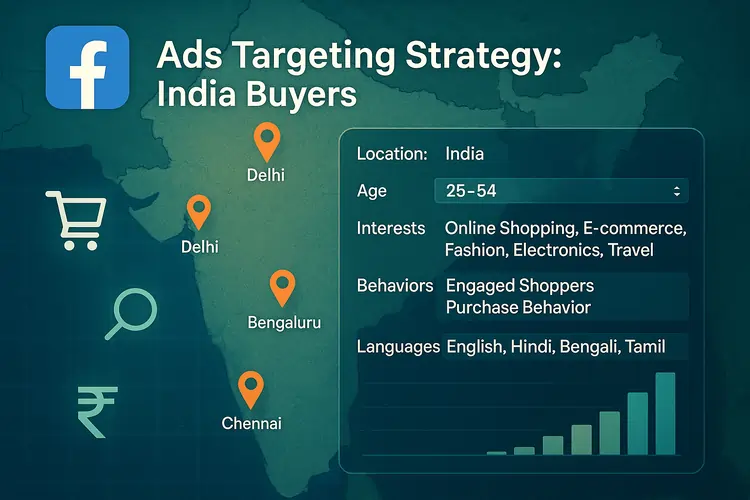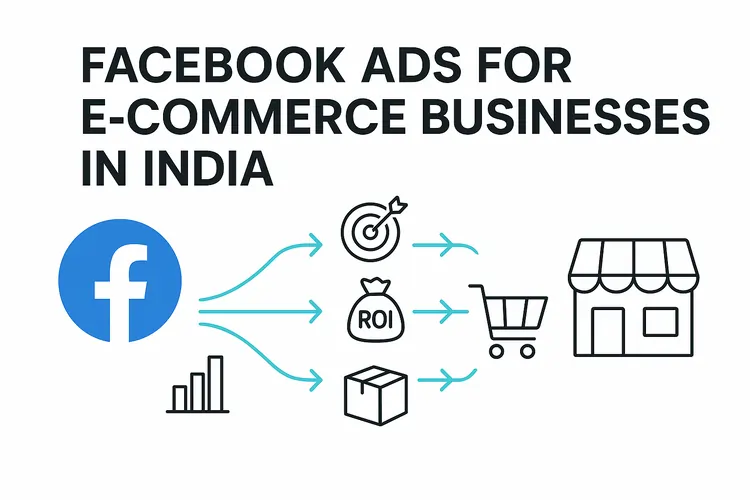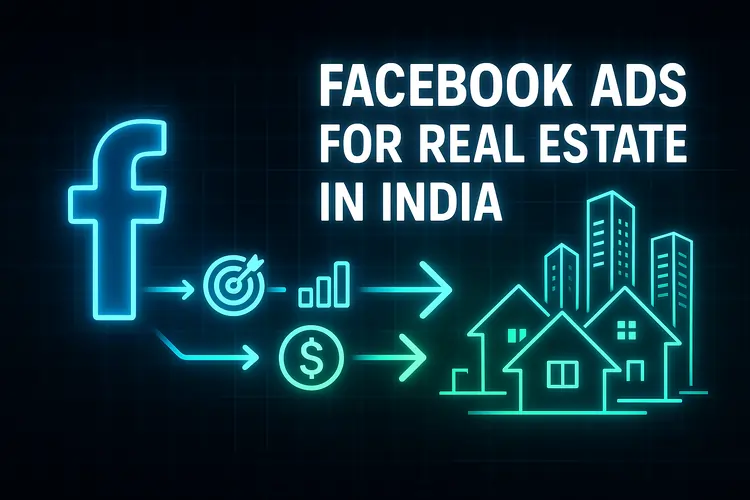If you’ve been wondering how to run a successful Facebook Ads campaign, you’re not alone. With over 2.9 billion monthly active users, Facebook offers one of the most powerful ad platforms to reach your ideal audience — but only if you know how to use it right.
Most advertisers waste money because they boost posts randomly, target the wrong audience, or fail to track ROI. A truly successful campaign goes beyond ad clicks — it’s about creating the right offer, targeting the right people, and building a funnel that converts strangers into paying customers.
In this guide, you’ll learn the exact process our team at The DM School uses to run profitable Facebook Ads for clients across India. From goal setting to targeting, creatives to analytics, we’ll break it down step-by-step so you can replicate our results.
🔥 Quick Takeaway: A successful Facebook Ads campaign is not about spending more — it’s about spending smarter, with a proven strategy that aligns your offer, audience, and funnel.

Step 1: Define Your Goal & Offer
A winning Facebook Ads campaign starts before Ads Manager opens.
You need a precise goal and an offer that justifies the click and the lead cost.
We align three things first — Goal → Unit Economics → Offer.
If these are tight, targeting and creatives scale without chaos.
📐 The North Star Triangle
Goal: What outcome and by when.
Unit Economics: CPL, CVR, CAC, LTV, payback.
Offer: Why click now and not later.
💡 Finance First (Do the Math):
Target CPL = Target CAC × Lead→Sale Conversion Rate.
Acceptable CAC = LTV ÷ Desired LTV:CAC.
Aim for ≥ 3:1 and ≤ 30–45 day payback for cash-flow sensitive funnels.
Example (India, INR): Offer = ₹499 workshop → 15% upsell to ₹9,999 course.
Blended LTV = ₹499 + (0.15 × ₹9,999) ≈ ₹1,999.
If LTV:CAC target is 3:1, max CAC = ₹666.
With 5% call-to-sale, target CPL = ₹666 × 0.05 = ₹33.
Your creative and targeting must be engineered to hit ~₹30–₹40 CPL, not “whatever Facebook gives.”
1) Declare the Goal (SMART) — “Generate 2,000 qualified leads at ≤ ₹40 CPL in 30 days for the webinar funnel.” Add a guardrail: landing page ≥ 25% CVR.
2) Choose the North-Star Metric — pick one: CPL (lead gen), CPP (purchase), or Booked Calls. Avoid chasing 5 KPIs at once.
3) Backsolve Economics — set target CPL from CAC and LTV. Decide daily budget = (Required leads ÷ days) × target CPL.
4) Shape the Offer — promise, proof, payoff, and deadline. Make it risk-reversed (audit, guarantee, limited seats).
5) Map Funnel Friction — click → landing → form → WhatsApp/SMS → call → sale. Remove 1 friction per step before spending.
🎁 Lead Magnet/Checklist — Fast win. Great for cold audiences. Pair with nurture + WhatsApp follow-up.
🧪 Free Audit/Trial — High perceived value. Perfect for service funnels and B2B.
🗓️ Webinar/Workshop — Appointment factory. Use urgency + bonuses to push show-up and purchases.
⚡ Tripwire (₹99–₹499) — Buyer signal. Monetises top of funnel and improves cash velocity.
🧩 Offer Formula: Specific Outcome + Timeframe + Proof + Risk Reversal + Now Trigger.
Example: “Get a free 30-min Facebook Ads Audit to cut your CPL by 30% in 14 days — used by brands featured in our case study. No obligation. Limited slots this week.”
We set goals this way for client funnels, then scale with discipline.
The same process powers our YouTube Ads results and our broader ad process.
⚠️ Common Mistakes: Vague goals (“get leads”), weak bait (“contact us”), no numeric guardrails, and ignoring payback period.
These lead to spend without scale.
📝 3-Minute Worksheet
1) Goal: ____________ by (date) at ≤ ₹____ CPL.
2) LTV ₹____, target LTV:CAC ___:1 → Max CAC ₹____ → Target CPL ₹____.
3) Offer angle: _____ (audit / workshop / tripwire / guide). Risk reversal: ______.
4) Funnel guardrails: LP CVR ≥ __%, Form Abandon ≤ __%, Show-up ≥ __%.
5) Daily budget: Leads/day × target CPL = ₹_____.
Next: Lock the numbers and shape the offer copy.
If you want us to sanity-check your math and offer, book a quick call or see our Facebook ads services.
Quick Takeaway: Define the math first, then craft the offer.
Your target CPL is a decision, not a surprise.
Step 2: Research & Define Your Target Audience
If you want to know how to run a successful Facebook Ads campaign, you must start with the right audience.
Precise targeting reduces wasted spend, lowers CPL, and improves conversions.
Poor targeting drains budget and fills your funnel with unqualified leads.
At The DM School, we follow a 3-layer method — Core Profile → Data-Driven Insights → Precision Stacking.
This framework powers our lead generation campaigns and our ad process for digital marketing.
🎯 The Targeting Pyramid
Base: Core demographics (age, gender, location).
Middle: Interests and purchase behaviors.
Top: Custom and lookalike audiences for scale.
Example (India): ₹499 webinar → Age 24–40, metro cities (Delhi NCR, Mumbai, Bangalore, Hyderabad).
Interests: “Digital Marketing,” “Entrepreneurship,” “Business Growth.”
Behaviors: frequent online buyers, high-end device users.
Add 1% lookalike from CRM buyers.
This targeting reduced CPL below ₹50 in our YouTube Ads results.
1) Audit Current Customers — Use CRM, analytics, and campaign reports. Note demographics, purchase triggers, and repeat rates.
2) Map Core Interests — Stack niche-relevant topics. For example, “Facebook for Business” + “Online Advertising” + “Entrepreneurship.” See our Facebook Ads targeting strategy for more ideas.
3) Add Behavioral Filters — High-value traits include frequent travel and premium purchases. Link with conversion tracking.
4) Build Custom Audiences — Retarget past buyers or visitors using methods in our Facebook Ads guide.
5) Scale with Lookalikes — Create 1–3% lookalikes from best customers. Proven in our case studies.
Unlike most agencies, we merge real buyer data with multi-layer targeting.
This method, also in our full-funnel ad process, cuts CPL by 30–60%.
⚠️ Common Mistakes: Broad targeting, skipping custom audiences, irrelevant interest stacking, or chasing size over quality.
Learn more in our Facebook Ads guide for India.
📝 Targeting Blueprint:
1) Core Demographics: ___________
2) Key Interests: ___________
3) Behavioral Filters: ___________
4) Custom Audience: ___________
5) Lookalike Size: ___________
6) Exclusions: ___________
Next: With targeting locked, move to creatives that speak directly to this audience.
Book a free strategy call or explore our social media services.
Quick Takeaway: Targeting defines success — reach the right people with the right offer at the right time.
Step 3: Craft High-Converting Ad Creatives
If you want to master how to run a successful Facebook Ads campaign, your creatives must stop the scroll.
Your targeting decides who sees your ad, but your creative decides whether they click.
At The DM School, we follow a formula that blends emotional triggers, clear value, and trust elements.
This process powers our low-CPL campaigns and proven ad strategies.
🎨 Creative Success Formula (3C Method)
1. Capture: Hook with a bold statement or question.
2. Convince: Show the benefit with proof.
3. Close: Give a clear, urgent call to action.
Example (India): For a ₹499 webinar, we used:
Hook: “Learn Facebook Ads in 30 Days or Less.”
Proof: “We’ve generated 46,000+ leads under ₹70 each.”
CTA: “Register now — seats filling fast.”
This format cut CPL by 35% compared to generic creatives.
1) Choose the Right Format — Test video, carousel, and static image ads. Video often wins for storytelling. See our Facebook Ads guide for best uses.
2) Focus on Benefits — Lead with transformation, not features. Example: “Cut your ad costs by 30% in 14 days.”
3) Add Proof Elements — Use testimonials, data, or case studies to boost credibility.
4) Use Clear CTAs — “Book your free call” or “Get your free guide” works better than “Learn more.” See our strategy call page.
Unlike generic ad templates, our creatives match targeting insights with tailored messaging.
This synergy is part of our full ad process, ensuring every element works toward conversions.
⚠️ Common Mistakes: Overloading text, ignoring brand style, skipping A/B tests, and using stock images.
These kill performance fast.
📝 Creative Checklist:
1) Strong hook: ___________
2) Proof element: ___________
3) Core benefit: ___________
4) CTA: ___________
5) Format type: ___________
Next: With creatives ready, we connect them to the right funnel.
Learn more in our digital marketing services or client case studies.
Quick Takeaway: A great creative speaks to the right person, delivers proof, and tells them exactly what to do next.
Step 4: Build a Conversion-Optimized Funnel
When learning how to run a successful Facebook Ads campaign, most people stop at getting clicks.
The real magic happens when those clicks move through a funnel designed to convert them into paying customers.
At The DM School, we treat the funnel as a guided journey.
From the ad to the thank-you page, every step removes friction and builds trust.
This method drives results in our client case studies and ad process.
🔄 The 4-Stage Facebook Ads Funnel
1. Click Stage: Ad creative + targeting.
2. Capture Stage: Landing page form or lead ad.
3. Nurture Stage: Email, WhatsApp, and retargeting ads.
4. Close Stage: Sales call, checkout, or in-app purchase.
Example (India): Lead ad → Thank-you page with bonus offer → Automated WhatsApp follow-up → Sales call in 24 hours.
This exact flow cut lead-to-sale time by 40% and increased conversion rate by 25%.
1) Design a Focused Landing Page — One offer, one CTA. Remove distractions. See our Facebook Ads guide for examples.
2) Add Instant Trust Signals — Show reviews from our testimonials page and case studies.
3) Automate Follow-Ups — Use WhatsApp automation and email nurture sequences to keep leads warm.
4) Retarget Non-Converters — Run retargeting ads with new angles. Learn in our complete Facebook Ads guide for India.
Unlike one-step funnels, a multi-touch funnel nurtures, educates, and closes leads faster.
This is why our digital marketing services include full funnel design.
⚠️ Common Mistakes: Long forms, slow follow-up, too many offers, and no retargeting strategy.
📝 Funnel Checklist:
1) Landing page loads in under 3 seconds.
2) Form has ≤3 fields.
3) Immediate confirmation and bonus.
4) Follow-up within 1 hour.
5) Retargeting ads active.
Next: Once your funnel works, scale budget while maintaining CPL.
See our client case studies for scaling examples.
Quick Takeaway: Your funnel should guide prospects from click to close with zero friction and maximum trust.
Running how to run a successful Facebook Ads campaign doesn’t end when the ads go live. The real winners are those who track every metric, test new ideas, and scale only what works. This is where you turn good campaigns into revenue machines.
1. Set Up Rock-Solid Tracking
Start with the Facebook Pixel installed on every key page. Add Conversion API for server-side tracking so you don’t lose data due to iOS14 restrictions.
Use UTM parameters in every ad link to monitor campaigns inside Google Analytics. This combination gives you accurate click-to-sale visibility.
2. Test Like a Scientist
Follow a simple 80/20 rule: 80% of budget on proven ads, 20% on testing. Use audience splits (broad, interest, lookalike) and creative variations (image vs. video) to find your top performer.
3. Scale Without Killing ROI
Scaling isn’t about just increasing budget. Sudden jumps can break the algorithm and increase CPL. Instead, follow the Budget Scaling Micro-Framework below.
| Scaling Stage | Daily Budget Increase | Condition to Scale |
|---|---|---|
| Stage 1: Validation | +20% every 48 hrs | 3+ days under target CPL |
| Stage 2: Acceleration | Double every 4–5 days | Stable ROAS above 3x |
| Stage 3: Domination | Duplicate winning ad set | Audience size supports scale |
4. Review & Reinvest
Check reports weekly to cut poor performers and reinvest into proven winners. Link Facebook data with your CRM for full-funnel visibility.
If an ad set is delivering high-quality leads like in this case study, shift more budget into it quickly.
Running a profitable Facebook Ads campaign isn’t just about clicks — it’s about creating a repeatable system that generates consistent revenue. By now, you’ve seen how targeting, creatives, funnels, tracking, and scaling all work together. The only thing left is action.
If you want a proven, done-for-you system for Facebook Ads, explore our Digital Marketing Services. From audience research to budget scaling, we apply the exact strategies we’ve used to generate 46,400+ leads at ₹68.90 CPL.
Frequently Asked Questions (FAQ)
1. How much budget should I start with for Facebook Ads?
For India-based campaigns, start with ₹500–₹1,000 per day. This gives the algorithm enough data to optimize without overspending. Adjust as you see results.
2. How long before I see results?
Most campaigns need at least 7–14 days of consistent spend to stabilize. Avoid making changes too quickly, as it resets the learning phase.
3. What’s the difference between Boosted Posts and Facebook Ads Manager campaigns?
Boosted posts are basic and lack advanced targeting options. Facebook Ads Manager allows precise targeting, A/B testing, and full conversion tracking — essential for serious advertisers.
4. Can I run Facebook Ads without a website?
Yes, you can send traffic to a Facebook lead form or WhatsApp. However, having a website or landing page generally improves conversion rates and brand trust.
5. How do I know if my Facebook Ads are working?
Track metrics like Cost Per Lead (CPL), Return on Ad Spend (ROAS), Click-Through Rate (CTR), and conversion rates. Compare against your target KPIs to decide whether to scale or optimize.


